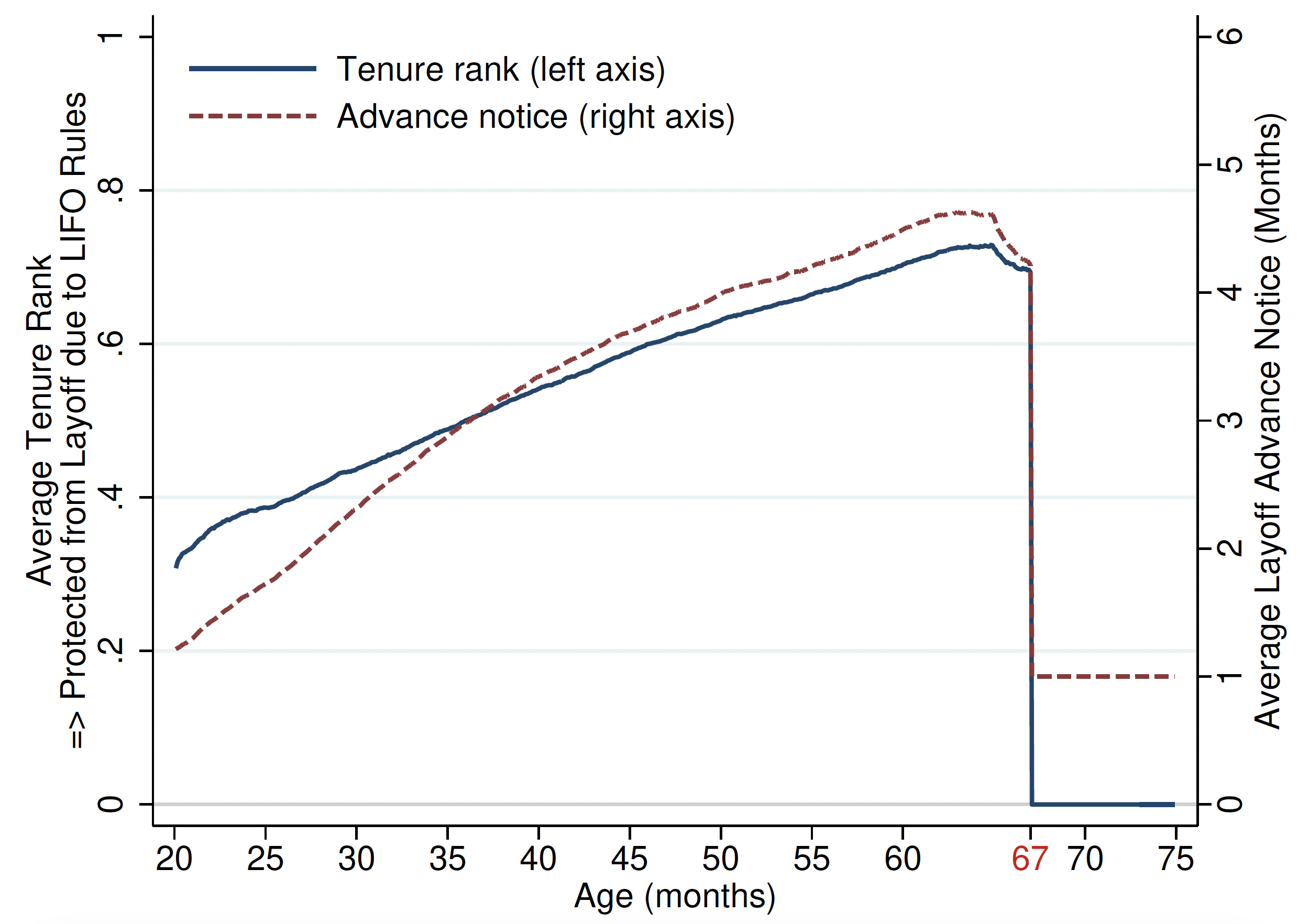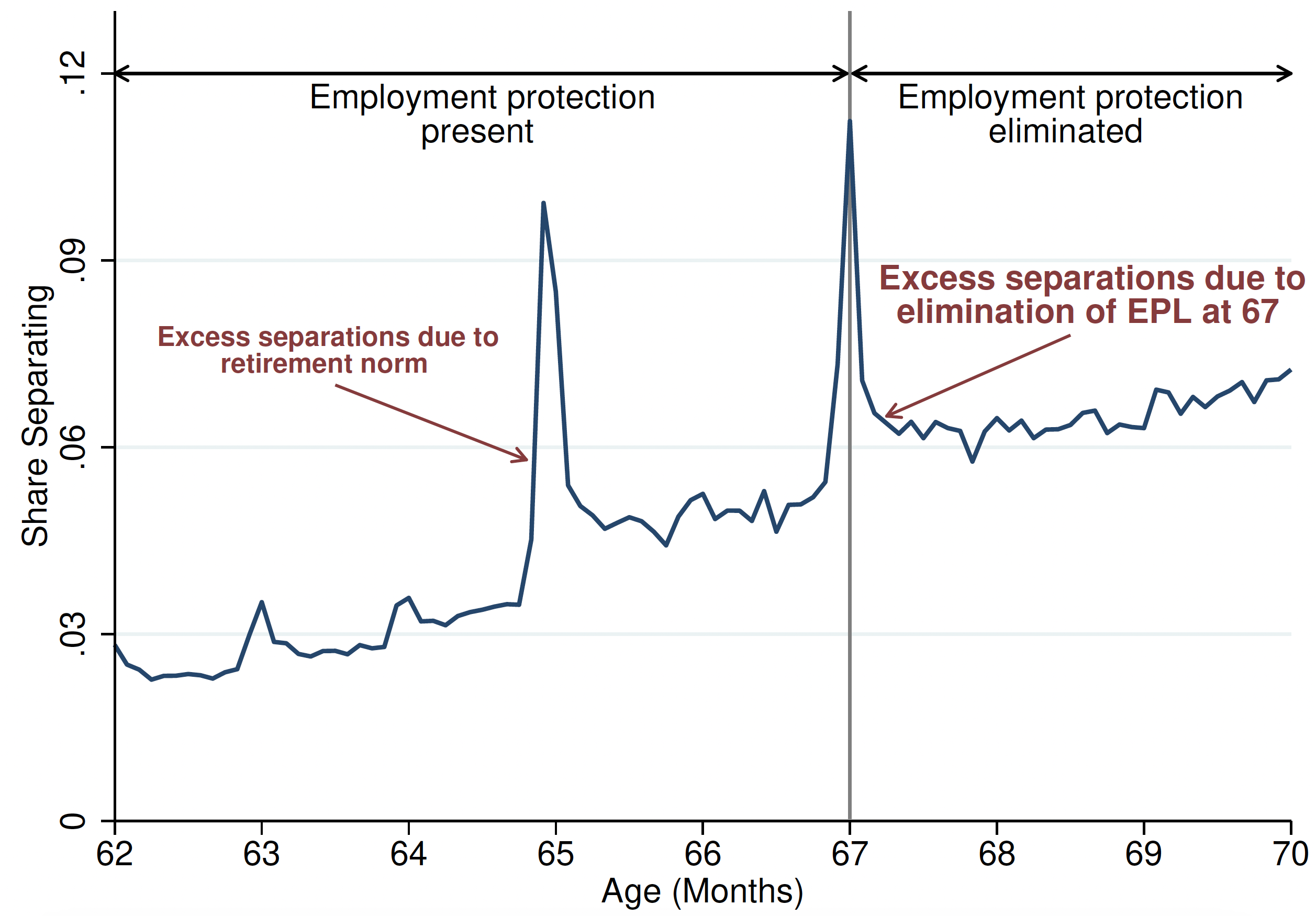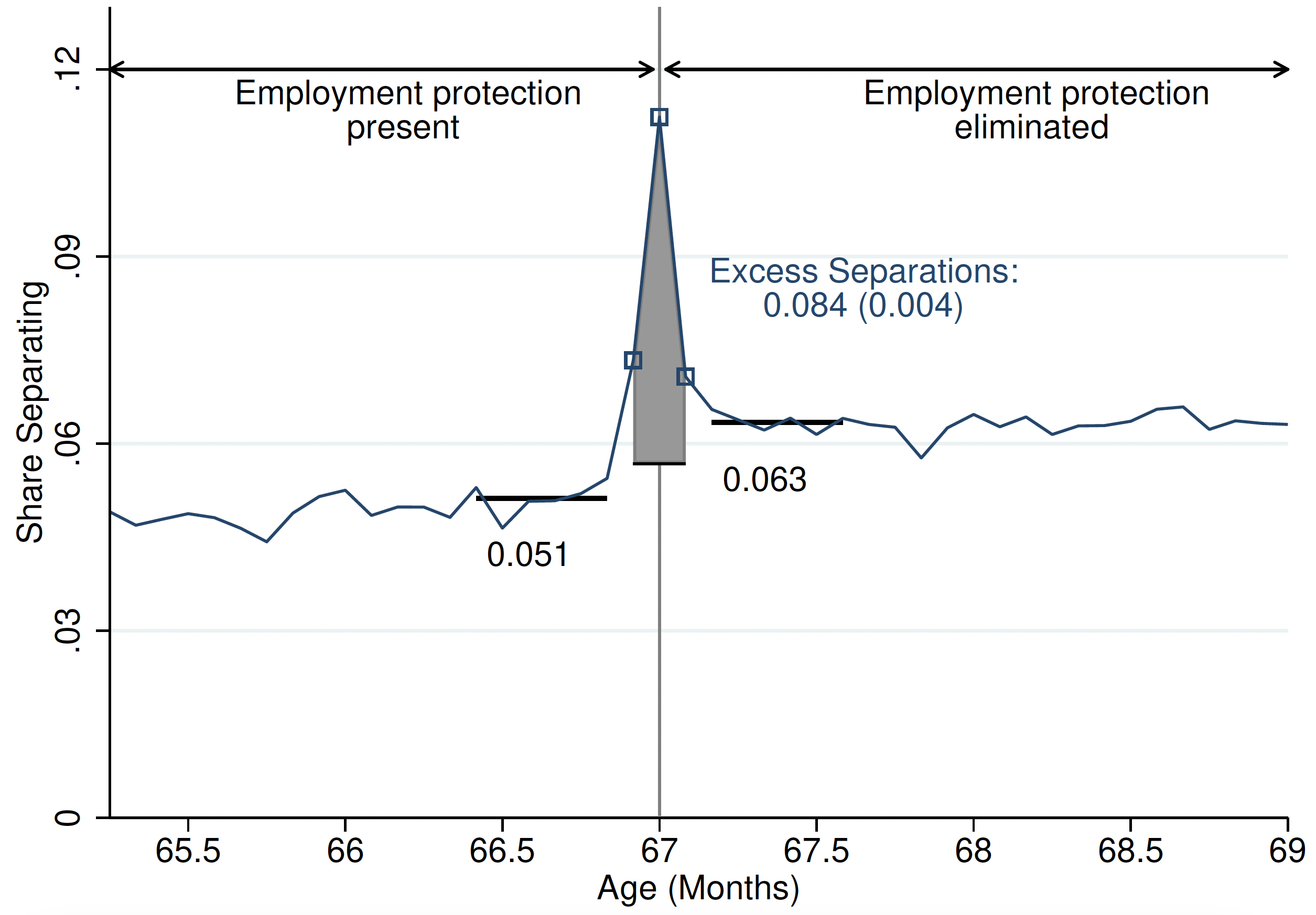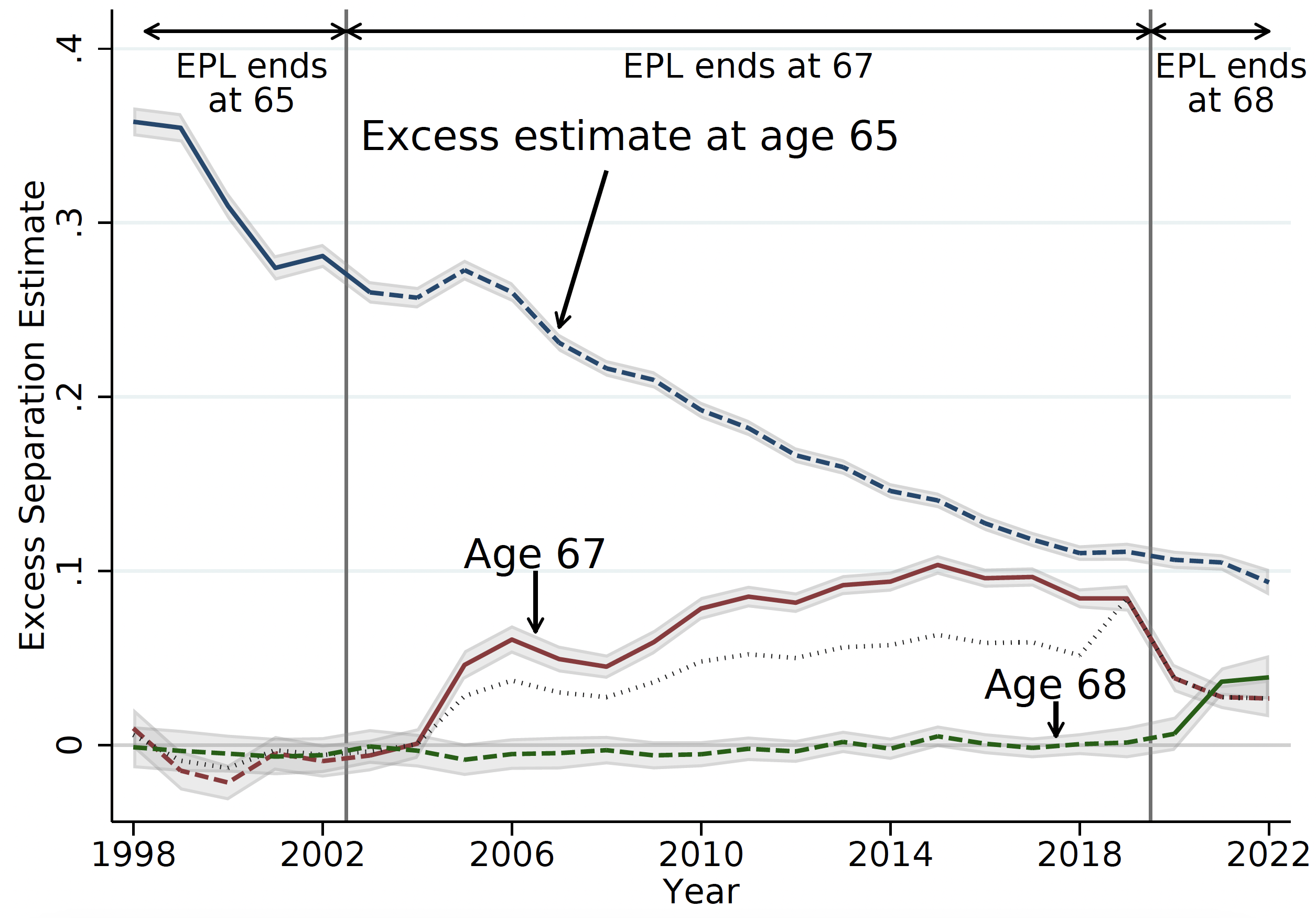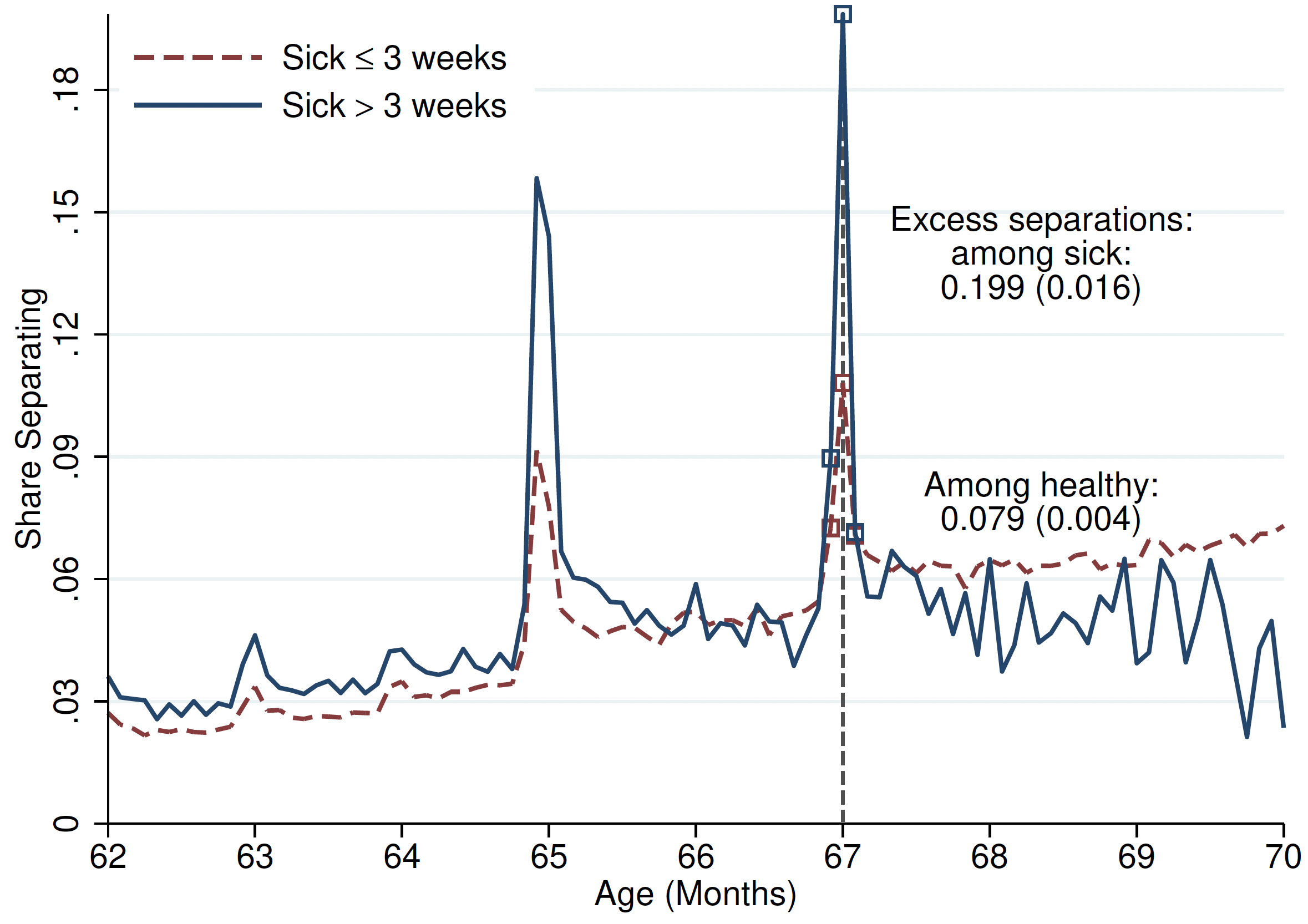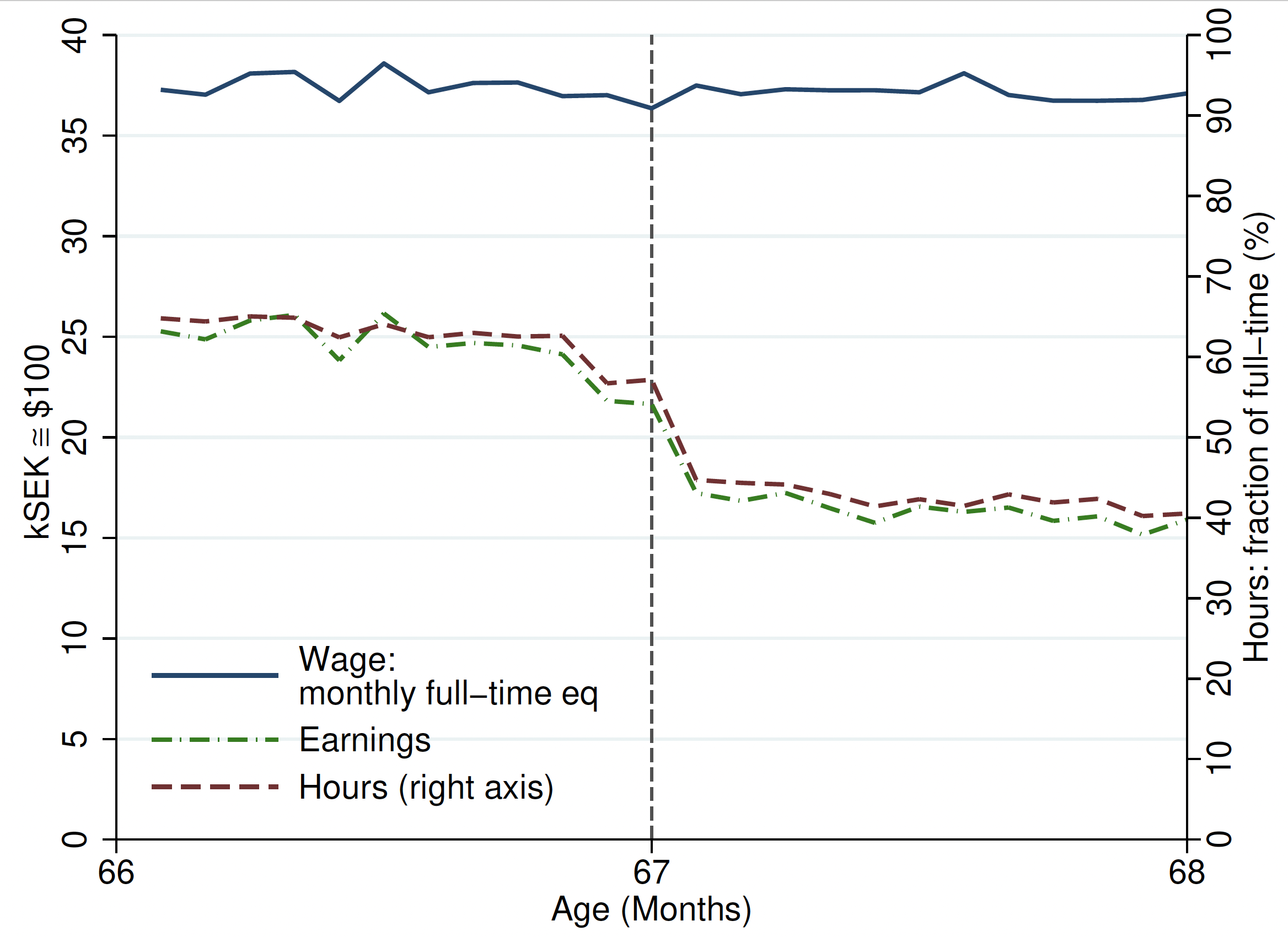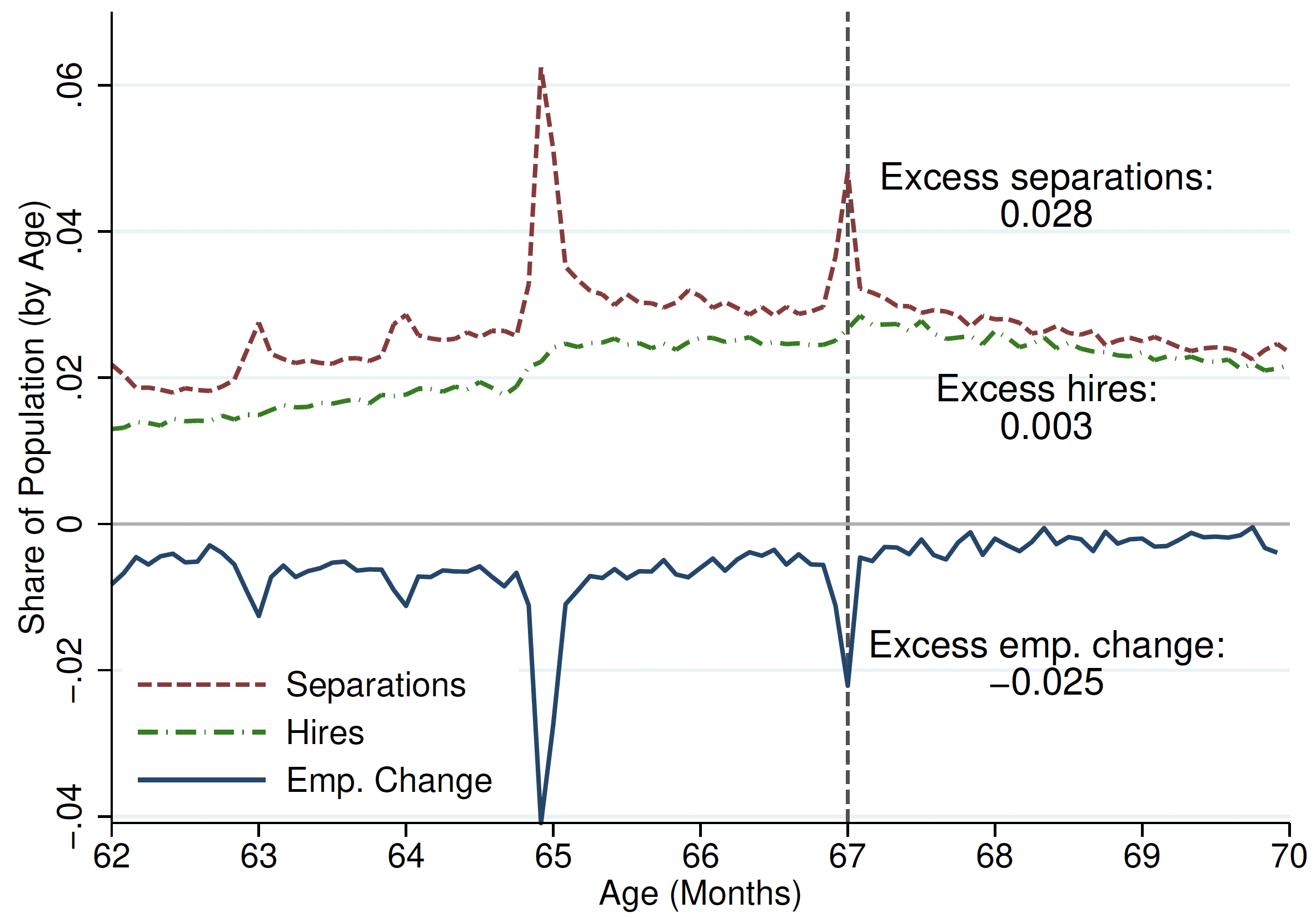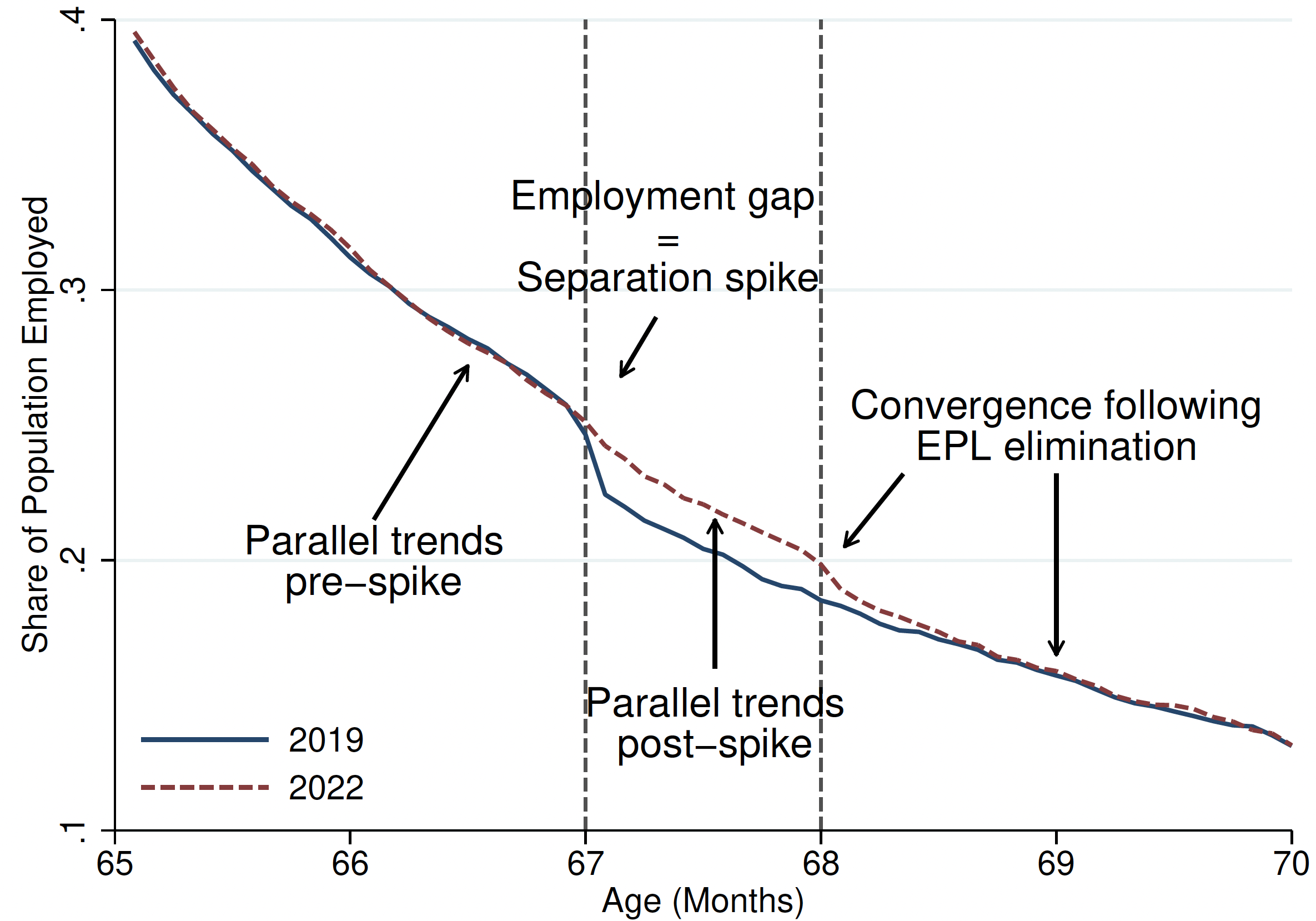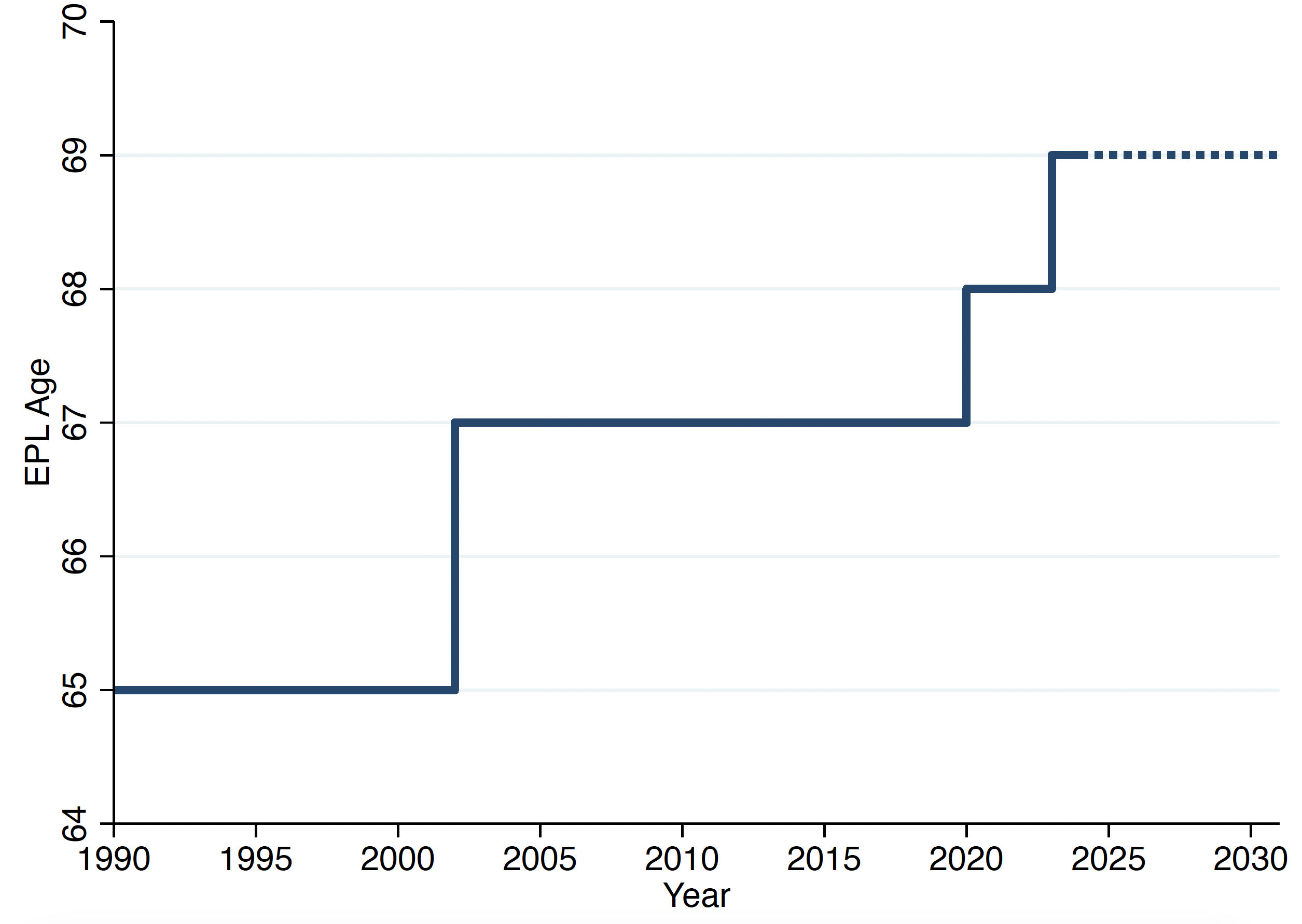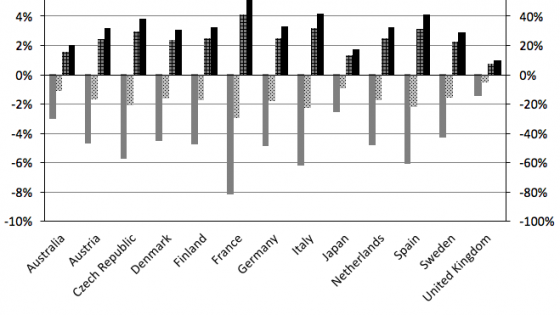Against the backdrop of an ageing workforce, policymakers around the world recognise the role employment protection legislation may play in propping up employment of older workers. For example, the OECD (2004, 2006) finds that while employment protection legislation is negatively correlated with employment rates for prime-age workers, this correlation goes away for older workers and is sensitive to controls.
Employment protection legislation consists of regulations that mainly constrain layoffs, through regulations on severance pay, just-cause restrictions for dismissals, advance notice, lengthy negotiations with worker representatives, and redress in labour courts. A defining feature of such legislation is that it favours high-tenured, older insiders, as its strength increases with tenure and age, due to seniority rules and phase-ins over the job tenure.
The basic economics of employment protection legislation implies that any positive employment effects necessarily come in the form of ‘deadwood’ labour: unprofitable jobs that firms would like to terminate but cannot because of the legislation and because entrenched older workers insist on staying put to reap rents.
Yet, because sharp phase-outs of employment protection legislation are rare and confounded – for example, by variation in pension incentives – little is known about how employment protection legislation shapes the jobs of older protected workers and, specifically, the extent and kind of ‘deadwood labour’ it may foster.
In our paper (Saez et al. 2023), we directly identify the deadwood jobs that employment protection legislation creates and provide a comprehensive analysis of their share and characteristics. We exploit the quasi-experimental elimination of strong employment protection legislation for older, highly protected insiders in Sweden.
Sweden ranks highly – alongside France – in the strictness of employment protection legislation across countries in, for example, OECD measures. During the period we study (through 2019), Swedish workers enjoy multi-month (up to 12 months) mandatory advance notice and various additional firm-level protections, such as ‘last in, first out’ layoff mandates and other restrictions on dismissals such as just-cause requirements until age 67. But once they turn 67, Swedish workers lose all their protections. Figure 1 provides the empirical age gradient of employment protection legislation in Sweden for two dimensions of Swedish employment protection legislation and the discontinuous elimination at age 67.
Figure 1 Employment protection and age in Sweden: Mandatory advance notice and last in, first out (LIFO) protection
Source: Saez et al. (2023).
This elimination of employment protection at age 67 permits employers to costlessly terminate all deadwood jobs. Hence, deadwood jobs can be identified by excess separations concentrated at the employment protection legislation cut-off age.
Importantly, unlike in other settings, the modern Swedish system does not match the employment protection legislation cut-off age with any other policy discontinuity that may confound the effects of such legislation; for example, pension benefits are actuarily fair in the cohorts we study, retirement timing is flexible for workers, and there is no mandatory retirement age.
Our first main finding is that overall, employment protection legislation has moderate effects on separations: 92 out of 100 initially protected jobs continue even without any employment protection legislation. Figure 2 captures this response, which plots the age gradient of separations (monthly) in 2019.
Figure 2 Separations by age in 2019
Notes: EPL = employment protection legislation.
Source: Saez et al. (2023).
We do document a clear but moderate excess spike in separations at age 67. Read through our bunching estimator, this spike identifies 8% of jobs as deadwood supported by employment protection legislation. The calculation is illustrated in Figure 3.
Figure 3 Bunching estimation of excess separations
Source: Saez et al. (2023).
We also show that, consistent with employment protection legislation as the driver, the excess separations are concentrated among high-tenure workers (who until 67 had longer advance notice and tenure protections) and firms subject to ‘last in, first out’ rules (exploiting a regulatory cut-off in firm size).
The spike migrates when a reform shifts the employment protection legislation cut-off age from 67 to 68, and no spike was present at 67 when the cut-off was at age 65. Hence, retirement norms (as in Seibold 2021) do not confound our estimate. Figure 4 illustrates the evolution of the separations driven by employment protection legislation for older Swedes between 1998 and 2022.
Figure 4 Excess separations by year at ages 65, 67, and 68
Notes: EPL = employment protection legislation.
Source: Saez et al. (2023).
The migration of the spike tracking the employment protection legislation cut-off wage from 67 to 68 further illustrates the logic of deadwood labour as a conflict between employees and employers in action: the deadwood workers in the new regime could have voluntarily separated at 67; yet, they insisted on staying in their jobs a year longer, consistent with a strictly positive rent. Conversely, firms could have offered workers contracts through 68 before the reform but chose to lay them off at 67 in the old regime, indicating a strictly negative surplus for firms.
Second, we characterise the excess separations at 67 in heterogeneity analyses, by devising a novel (univariate and multivariate) regression approach applied to the bunching estimator. The heterogeneity in excess separations traces out three related concepts: the characteristics of a deadwood worker, the type of organisation that accumulates deadwood jobs, and the pre-elimination baseline degree of protection (i.e. treatment intensity). Legal factors determining employment protection legislation strength (firm size and tenure) light up in our heterogeneity analysis. Besides stronger employment protection legislation, tenure could also capture ‘good jobs’ that older workers evidently hold on to.
But we also find symptoms of firms cherry-picking (or, ‘lemon dropping’) workers that are plausibly unproductive. Specifically, we find that workers with a recent spell of sickness exhibit a 2.5-times larger excess separation effect – with nearly 20% of those workers getting laid off exactly when they turn 67. Labour supply behaviour cannot explain this pattern because sick workers could have voluntarily retired before or after 67. Higher income is also associated with higher excess separation risk. Figure 5 plots separations by workers’ sickness history and illustrates this large differential effect.
Figure 5 Separations by sickness history of worker
Source: Saez et al. (2023).
Consistent with firms targeting specific deadwood jobs, we do not find any firm that, as a matter of rigid personnel policy, terminates jobs at 67 across the board. There is, however, one organisational characteristic that does stand out: the public sector lays off twice as many workers as the private sector, even when controlling for firm size.
Third, we study the effects of employment protection legislation on the vast majority of jobs – 92% – that survive the elimination of such legislation. To do so, we track job stayers: individuals who are employed in the same job before they turn 67 and after. We find no evidence for wage reductions at age 67, perhaps reflecting wage rigidity. Strikingly, while 92% of jobs stay active after 67 without employment protection legislation, we uncover clear and strong hours and earnings reductions among stayers. Figure 6 shows this result for the public sector, where we have hours information beyond age 67. Quantitatively, when we turn to a broader sample including private sector workers in the administrative data on earnings, intensive-margin hours reductions among stayers are about 8%, doubling the total amount of deadwood labour.
Figure 6 Panel analysis of stayers: Hours vs wages (public sector only, due to data restrictions in earnings survey)
Source: Saez et al. (2023).
Fourth, motivated by these rich margins of adjustment and thanks to the age-based variation, we conduct a comprehensive (equilibrium) analysis of the effects of employment protection legislation on older workers, moving from studying job-level outcomes to an analysis on a per capita basis. We find that the elimination of employment protection legislation lowers a cohort’s employment-population ratio by 2.5 percentage points (10%). That is, separation effects pass through almost fully into employment, as we find essentially no offsetting response in the form of hiring. Figure 7 plots these employment, hiring, and separation effects on a per capita basis.
Figure 7 Change in employment to population ratio and worker flows by age in 2019
Source: Saez et al. (2023).
As our most comprehensive equilibrium outcome, we consider earnings per capita, incorporating all extensive-margin (separations and hiring) and intensive-margin adjustments (hours, job quality, composition). That is, we essentially measure deadwood in earnings units. Overall, the elimination of employment protection legislation reduces total earnings per capita by nearly 22% – equivalently, employment protection legislation propped up earnings per capita among older workers by 22%.
Presenting this additional perspective in Figure 8, we use those per capita graphs to validate the implicit identification assumption underlying our local analysis: that all responses are concentrated sharply around the cut-off age, in the form of one-time adjustments and without effects on behaviour before or after. Indeed, we find parallel trends in the employment rate and earnings per capita comparing the 2019 and 2022 regimes, when cut-offs were 67 and 68, respectively. The only divergence occurs sharply at age 67, and then lines quickly reconverge after age 68. Hence, the employment protection legislation reform delays the shedding of deadwood from age 67 to age 68, propping up employment in this interim age interval.
Figure 8 Difference-in-difference comparison of two employment protection legislation regimes: 2019 (cut-off age: 67) and 2022 (cut-off age: 68)
Notes: EPL = employment protection legislation.
Source: Saez et al. (2023).
Sweden has passed further legislation that raised the cut-off to 69 starting in 2023. Figure 9 plots this policy trajectory. The policy motivation is the belief that the employment protection legislation age props up employment among older workers. Our results support this idea, with employment protection legislation providing a moderate boost to the length of the working life by extending the duration of, and hours in, the last jobs, albeit presumably by reducing firm profits and with potential equilibrium effects on the hiring of younger workers. At the highest level, our findings indicate that employment protection legislation in Sweden can be seen as shifting social insurance and retirement funding to employers, forcing them to keep on the payroll some older workers at wages at a premium.
Figure 9 Evolution of employment protection legislation cut-off age in Sweden
Notes: EPL = employment protection legislation.
Source: Saez et al. (2023).
References
OECD (2004), “Employment protection regulation and labour market performance”, Employment Outlook, Paris: OECD.
OECD (2006), “Work disincentives and barriers to employment”, Ageing and Employment Policies: Live Longer, Work Longer, 51–84.
Saez, E, B Schoefer, and D Seim (2023), “Deadwood labor: The effects of eliminating employment protection”, NBER Working Paper w31797.
Seibold, A (2021), “Reference points for retirement behavior: Evidence from German pension discontinuities”, American Economic Review 111(4): 1126–65.




